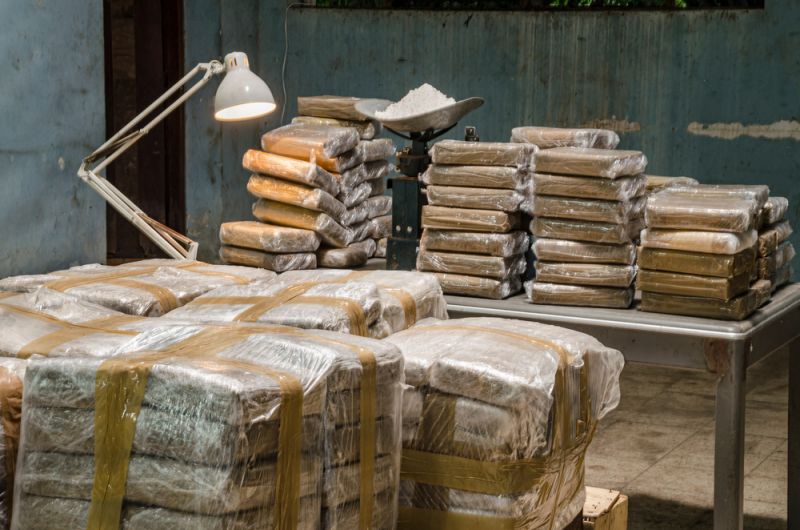

A brief historic overview on Italy’s most powerful mafias.
To outsiders, Italy is famous for pasta, pizza, mandolino, and what is generically referred to as “the mafia.” Mafia groups, or rather, mafie are embedded in Italy’s history.
Though they are often glamourised by movies and entertainment, their existence impacts Italy on a political, economic, and social level, and their effects vary from region to region.
Sicily: Cosa Nostra
Though the term “mafia” is now widely used to describe organized crime groups in Italy, it originally referred to someone who was suspicious of authority.
As an island, Sicily was subjected to ever-changing foreign occupation in the centuries preceding Italy’s unification. In the 19th century, groups of Sicilian mafiosi joined forces to become a self-governing body.
The Sicilian Mafia, also known as Cosa Nostra, gained power and profit through land extortion. After Italy’s unification in 1861, Cosa Nostra maintained its control in Sicily by helping the newfound Italian government control smaller criminal groups in exchange for temporary immunity. In the 1900s, various families involved with Cosa Nostra banded together to form a structured crime organization, complete with initiation rituals and a strict code of conduct.
Since its humble beginnings, Cosa Nostra has expanded its power and profit through a combination of illegal activities, including drug trafficking, arms trafficking, political corruption, money laundering, racketeering, and usury.
In 1992, under boss Totò Riina’s direction, Cosa Nostra murdered Italian Magistrate Giovanni Falcone, along with his wife and three policemen. Falcone was replaced by Paolo Borsellino, who was killed by Cosa Nostra two months later. The tragic, high-profile murders put a national spotlight on organized crime, so Cosa Nostra temporarily retreated to the shadows.
According to the Guardian, since 1992, more than 4,000 Sicilian Mafia members have been arrested, including Riina, who died in prison in 2017. As a result of his death, in combination with Italy’s economic crisis and the rise of new mafia groups, Cosa Nostra seems to be losing its political grip on Sicily. Many former members are now working as police informants.
Campania: Camorra
The Camorra is the regional Campania mafia group, concentrated around Naples. The group is involved in the production of counterfeit money, money laundering, drug trafficking, racketeering, illegal waste disposal, and political corruption.
It is the oldest mob group in Italy, with roots possibly dating back to 15th century Spain. Before Italy’s unification, the Camorra was entrenched in local politics and municipal organisations. Though it briefly lost political power after the unification, it slowly regained prominence through various illegal practices.
When Naples was bombed during WWII, the Camorra used its resources to take charge of local infrastructures, according to Time. The Camorra increased its profits by investing in cigarette and drug trafficking in the 1960s and 1970s.
Drug trafficking has remained one of its most lucrative practices. In 2017, Euro News reported that the Camorra’s estimated annual revenue was 3.75 billion euro.
The Camorra has also profited from illegal waste trafficking, which has been blamed for the Naples trash crisis that lasted from the 1980s through 2012. The crisis was characterized by trash-filled city streets due to a mismanaged and Camorra-infiltrated waste system.
Today, the Camorra continues to illegally dump waste in rural areas of the Campania region, risking the health of locals and ruining vegetation.
The structure of the Camorra is horizontal, composed of independent groups that are not bound to each other by ritual or familial ties, but a system of checks and balances. For this reason, the Camorra is both difficult to eliminate and prone to internal conflict. There are approximately 7,000 members.
Calabria: ‘Ndrangheta
‘Ndrangheta is one of the richest and most powerful organised crime groups in the world.
The Calabrian mob specialises in drug trafficking, money laundering, and political corruption. ‘Ndrangheta was formed in the late 19th century by Calabrian prisoners. Group members quickly infiltrated the political sphere in Calabria before entering the drug trade.
In the 1990s, while government officials were focused on dismantling Cosa Nostra after Falcone and Borsellino were killed, ‘Ndrangheta seized the opportunity to expand, specifically within drug trade. Today, ‘Ndrangheta has monopolized global drug trade.
The group has many international affiliates in countries such as England and Germany. According to CNN, ‘Ndrangheta cleans its money by investing in small businesses outside of Italy.
The structure of ‘Ndrangheta is tight-knit, composed of family groups and blood ties. Marriages are often arranged between existing families to maintain the group’s exclusivity.
Because of this, the group has been notoriously difficult to infiltrate. The name “‘Ndrangheta” means “heroism” in Greek, and reflects the strict value system present within the group. Unlike Cosa Nostra, very few members of ‘Ndrangheta have ever become police informants. There are approximately 6,000 members.
Puglia: Sacra Corona Unita and Società Foggiana
Sacra Corona Unita is the largest mafia group within the Puglia region. The group began as a southern branch of the Camorra, formed in the 1970s by Raffaele Cutolo, a Camorra boss.
When Cutolo was arrested, Sacra Corona Unita separated from the Camorra and became the so-called “fourth” mafia group. Under the leadership of Giuseppe Rogoli, its practices include drug trafficking, arms trafficking, prostitution, and usury. The structure of the group is multi-tiered. Members work through different levels of crimes and rituals to prove their commitment to the group. Sacra Corona Unita has around 2,000 members. The group controls the drug trafficking ports along the Southeastern coast.
When an insider murder led to divisions within Sacra Corona Unita, the Società Foggiana was created. Società Foggiana operates within the city of Foggia, and its practices include drug trade, racketeering, and extortion. Though it is small, it is regarded as the most violent mafia group as it has brought devastating violence to Foggia.
Originally posted on 21-05-2021